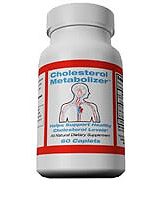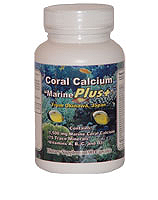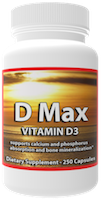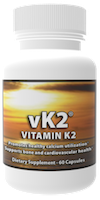Menu
- From The Desk of Our Founder
- Introducing: LipoProstate Miracle™
- The Science
- Bioavailability
- Bioaccesibility and Bioactivity
- Factors that Effect Bioavailability
- Oral Delivery Systems
- Advanced Lipsomal Delivery System™
- Phosphatidylcholine (PC)
- Nitrogen Gas
- The Prostate: Function and Disease
- FAQ
- Testimonials
- Order LipoProstate Miracle™
- Contact Us
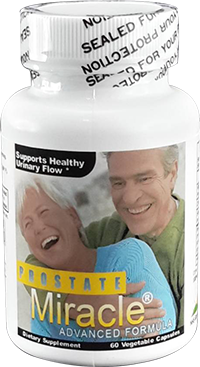

I want to welcome every visitor to our site
and thank you for your interest in LipoProstate Miracle™,
We all know, there are a TON of prostate pills out there!
- Some brands claim to be the strongest.
- even though that often exceeds the therapeutic dose
- Others brag about how many ingredients they contain.
- even though there are only 4 essential prostate nutrients
- It goes without saying that the choice of ingredients in a formula is critical:
- High quality, clean, ingredients are a "must".
-
They need to be effective, but also compatible with
each other (even better if they are synergistic). -
Each needs to be provided in their therapeutic dose.
(no more, no less) -
The bioavailability of each ingredients is super critical
(although it seldom gets the attention it deserves) -
Ingredients that are poorly absorbed . . .
provide very limited health benefits. -
Many ingredients (including the
4 essential prostate nutrients), face
serious bioavailability challenges. -
Adding insult to injury, men with prostate issues . . .
also tend to develop gut issues, which impairs their ability to absorb nutrients. -
So, in other words . . . as men age, they have more difficulty
absorbing the very nutrients their prostates need the most. - This phenomenon leaves a HUGE void in the marketplace.
-
We could not find a single prostate product that
addresses the duality of this absorption challenge. - That is exactly why we developed LipoProstate Miracle™.
LipoProstate Miracle™ is a unique and revolutionary product
using cutting edge liposomal technology to deliver:
- The 4 essential prostate nutrients
- to their targeted cells in the prostate
We think you will agree that:
- LipoProstate Miracle™ is a game changer
- setting the new standard for prostate support
Founder of NHS Global
NHS Global is proud to announce the launch of:
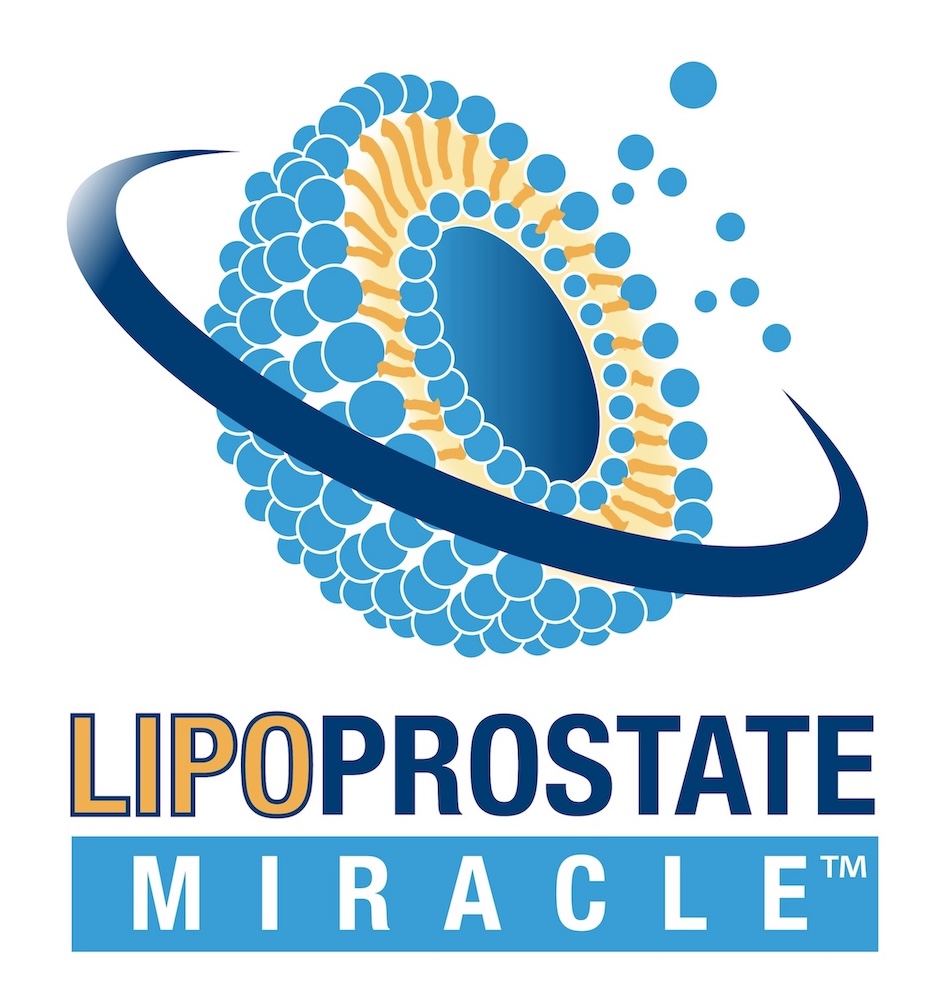
3rd Generation Upgrade to - Prostate Miracle®
-
We are so grateful for having had the privilege all these years of being able to earn a living,
- just doing what we love to do - sharing our passion about natural health with others
and helping them to optimize their health, through the use of our natural health formulas. -
We take the responsibility and trust that comes with this privilege very seriously,
which is why we are always on the quest for new ways to improve our products. - In 2013, we learned of a French company that was producing a phyotsterol extract (derived from pine bark), which was significantly more pure and double the potency of the USA made sugar cane extracts we were sourcing at the time. This piqued our interest and after further research . . .
- We committed to reformulate Prostate Miracle® (using this superior source of beta sitosterol); After several months of development, we were able to complete the formulation and we launched: Prostate Miracle Advanced Formula®
-
in 2025, with the launch of LipoProstate Miracle™ . . .
We have fulfilled our long-time goal of formulating:
The next gen Prostate Miracle® (utilizing a liposomal delivery system). -
This upgrade was no easy feat. . . .
LipoProstate Miracle™ was 7 years in the making: -
I must admit that we initially did not fully appreciate
how complicated the development process would be.
-
There were times when frustration with technical setbacks,
raised doubts as to if this project would ever make it to the finish line. -
We owe a "debt of gratitude" to our 2 teams of dedicated chemist
(a feasibility team and a production team). The success of this
product is due in large part to their persistence and unrelenting efforts. -
We think you will agree that our commitment to bring this
product to market was well worth the time and effort it took. - When LipoProstate Miracle™ is swallowed (with water) . . .
- The capsule breaks down in the stomach:
- releasing Phosphatidylcholine (PC)
- into water
-
spontaneously forming spherical
(lipid bi-layer) liposomes. - As the other ingredients are simultaneously released . . .
- Nitrogen gas accelerates the dispersion
- of the active ingredients (the payload)
- into the storage vesicles within the liposome
-
protecting the payload on its journey
through the harsh environment of the stomach -
Upon safe arrival at the duodenum (the first section of the small intestine),
the journey continues through the jejunum, and ileum sections, where - The liposomes can easily pass
- through the intestinal villi
- into the blood stream.
- on route to the prostate
- Upon arrival at the prostate tissues . . .
- The liposomes merge with the prostate cells
-
delivering their payload inside these target cells
(through the process of endocytosis)
Its hard to believe that its been 25 years, since we first launched Prostate Miracle®.
How Does LipoProstate Miracle™ Work?
- LipoProstate™: uses several technologies to enhance the bioavailability of its ingredients
- chelation
- liposome
LipoProstate Miracle™ Supplement Facts
| Serving Size: 1 Capsule
Servings per container: 60 |
||
| Amount Per Serving | % Daily Value | |
|---|---|---|
|
Proprietary Blend (807 mg) Containing: Phosphatidylcholine Pine Sterols Zinc Selenium Vitamin D3 |
807 mg | * |
|
Excipients: Vegetable Capsule Medium Chain Tryglcerides (MCT) Candelilla Wax, Nitrogen gas |
||
Directions:
Take one capsule in the morning and one in the evening.* Daily Value not established
LipoProstate Miracle™

- 1 bottle
- $59.95
- 2 bottles $54.95 each
- $109.90
- 3 bottles $51.95 each
- $155.85
- 6 bottles $49.95 each
- $299.70
LipoProstate Miracle ™ Supplement Facts
| Serving Size: 1 Capsule
Servings per container: 60 |
||
| Amount Per Serving | % Daily Value | |
|---|---|---|
|
Proprietary Blend (807 mg) Containing: Phosphatidylcholine Pine Sterols Zinc Selenium Vitamin D3 |
807 mg | * |
|
Excipients: Vegetable Capsule Medium Chain Tryglcerides (MCT) Candelilla Wax, Nitrogen gas |
||
Directions:
Take one capsule in the morning and one in the evening.* Daily Value not established
Two other Products for Additional Support of Prostate Health:
Pectin Plus®
Pectin Plus® is a great Companion product to LipoProstate Miracle®
- Supports Healthy Detoxification
- Supports Healthy Cholesterol
- Supports Cardiovascular Health
- Promotes Healthy Blood Pressure
- Promotes Healthy Cell Growth
- Promotes Healthy Immune Response
Contains:
180 capsules per bottle (30 day supply)
- Citrus Pectin (500 mg/capsule)
- Odorless Garlic extract (100 mg/capsule)
- Cilantro extract (10:1) (50 mg/capsule)
Suggested use:
3 capsules twice per day
Click Here for more info.
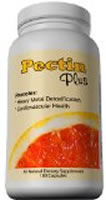
- 1 bottle - Pectin Plus
- $29.95
- 2 bottles - Pectin Plus $28.95 each
- $57.90
- 3 bottles - Pectin Plus $27.95 each
- $83.85
- 6 bottles - Pectin Plus $26.95 each
- $161.70
- 12 bottles - Pectin Plus $24.95 each
- $299.40
Estrogen Balance™
Estrogen Balance™ is a great Companion product to LipoProstate Miracle®
- Supports Healthy Estrogen
- In Men:
- Promotes Prostate Health
- In Women:
- Promotes Breast and Uterine Health
- In Men and Women:
- Promotes Cardiovascular health
Contains:
60 capsules per bottle (30 day supply)
- Quercetin (125 mg per capsule)
- D.I.M.
(100 mg per capsule) - Flax Seed
(450 mg per capsule)
Suggested use:
1 capsule twice per day
Click Here for more info.
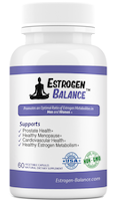
- 1 bottle - Estrogen Balance
- $26.95
- 2 bottles - Estrogen Balance $25.95 each
- $51.90
- 3 bottles - Estrogen Balance $24.95 each
- $74.85
- 6 bottles - Estrogen Balance $23.95 each
- $143.70
- 12 bottles - Estrogen Balance $21.95 each
- $263.40
Prostate Duo Pack
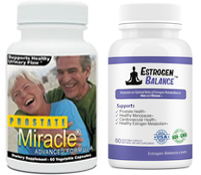
- 1 of each
- $56.95
- 2 of each $51.48 per duo
- $102.95
- 3 of each $47.32 per duo
- $141.95
- 6 of each $45.83 per duo
- $274.95
Prostate Trio Pack
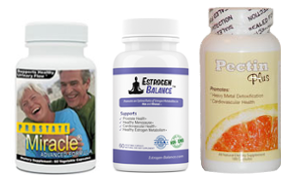
- 1 of each
- $85.95
- 2 of each $79.48 per trio
- $158.95
- 3 of each $74.65 per trio
- $223.95
- 6 of each $66.33 per trio
- $397.95
Other Products Available from: NHS Global Distributors LLC
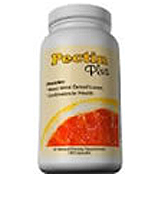
Pectin Plus®
Supports healthy detoxification, healthy blood pressure, healthy cholesterol levels and prostate health
read more
Estrogen Balance®
A natural formula for Men & Women, combining: D.I.M., Quercetin and Flaxseed.
read more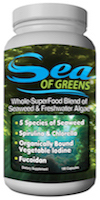
Sea of Greens®
A Whole-Superfood supplement, combining an optimal blend of sea vegetables and Freshwater algae.
read more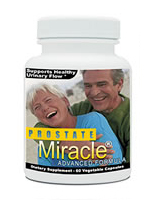
Prostate Miracle®
Trusted by thousands to support healthy urinary flow and prostate health.
read moreInformation
Contact
255 Rivertown Shops Dr.
Saint Johns, FL 32259
International: 1.805.322.0005
Thanks for your Interest in LipoProstate Miracle™
This information here within is designed to provide accurate information in regard to the subject matter covered. It is provided with the understanding that NHS Global Distributors, Inc. is not engaged in rendering medical advice. If expert assistance is required, the services of a competent medical professional should be sought. These statements have not been evaluated by the Food and Drug Administration. These products are not intended to diagnose, treat, cure or prevent any disease. Always read and follow manufacturer's directions that come with this product.
You are protected by the FDA Dietary Supplement and Nonprescription Drug Consumer Protection Act
please call 877.965.2140 or Click here to report any Adverse Reaction with LipoProstate Miracle.



